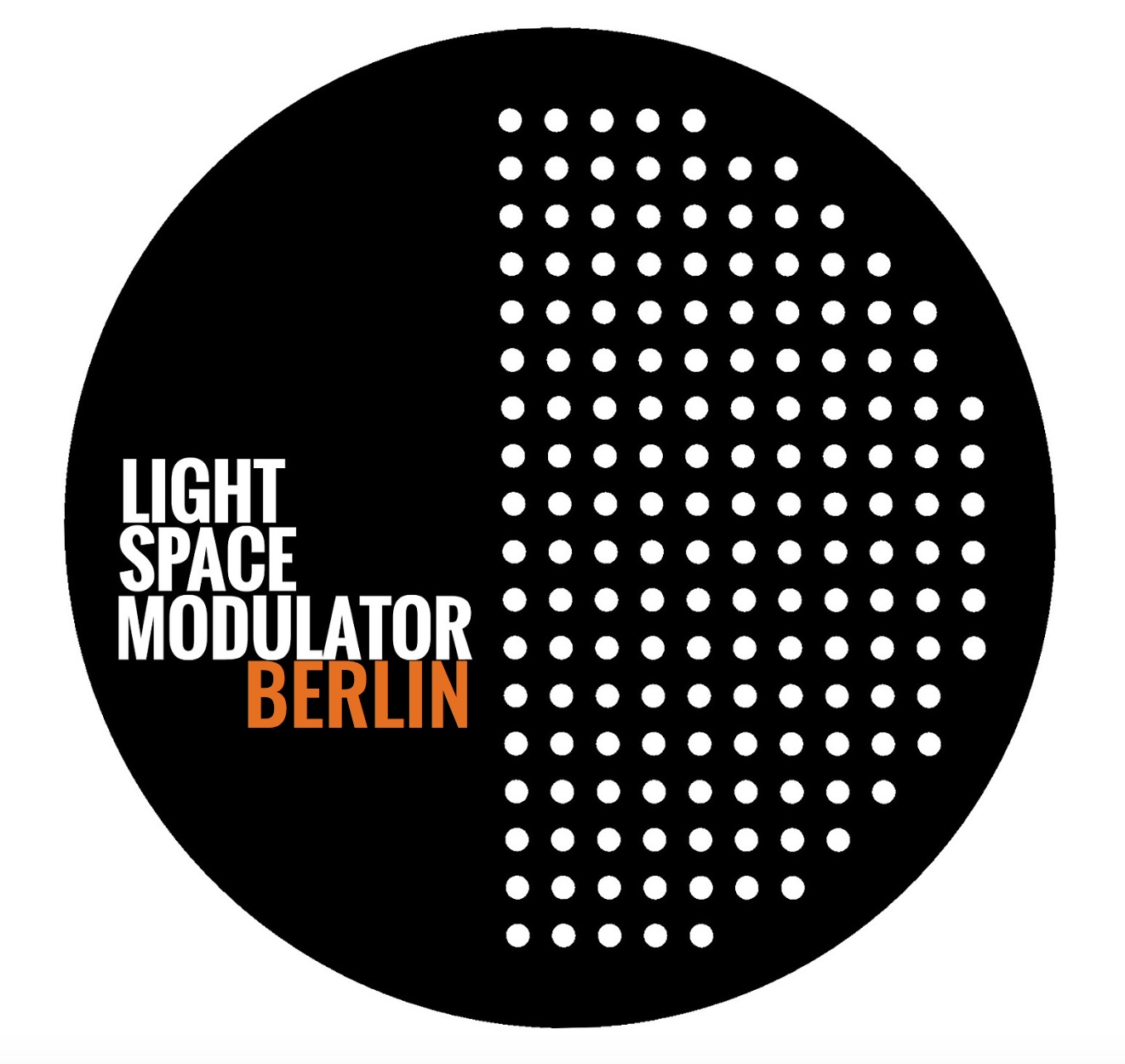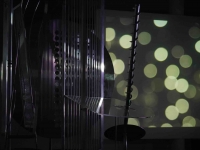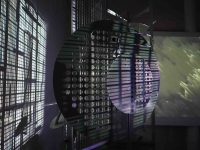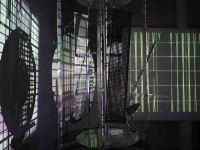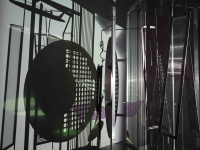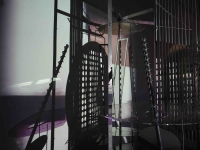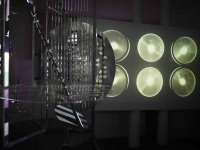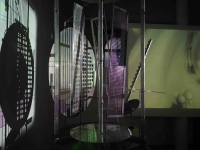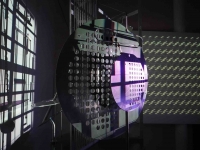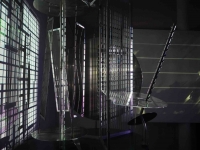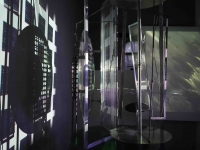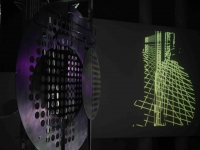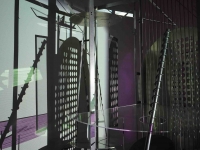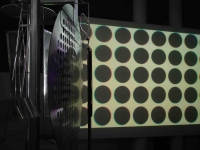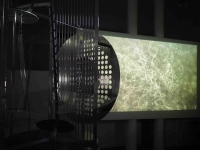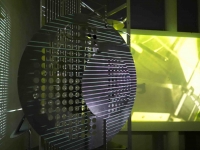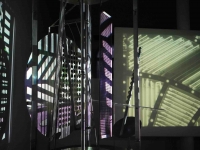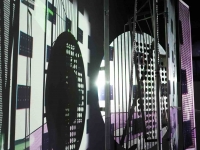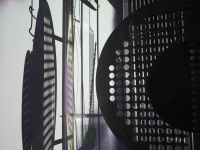Light Space Modulator
In Homage to Moholy-Nagy
Presentation by the Artist every Friday at 14:00 – 18:00
5 June – 27 September 2020
And during Berlin Art Week:
9 June – 13 September 2020 at 14:00 – 18:00
We resume normal gallery hours: 9 – 27 September, 13:00 – 19:00
& Viewing by Appointment. Please contact: staff@momentumworldwide.org
@ MOMENTUM
Kunstquartier Bethanien
Mariannenplatz 2, 10997 Berlin
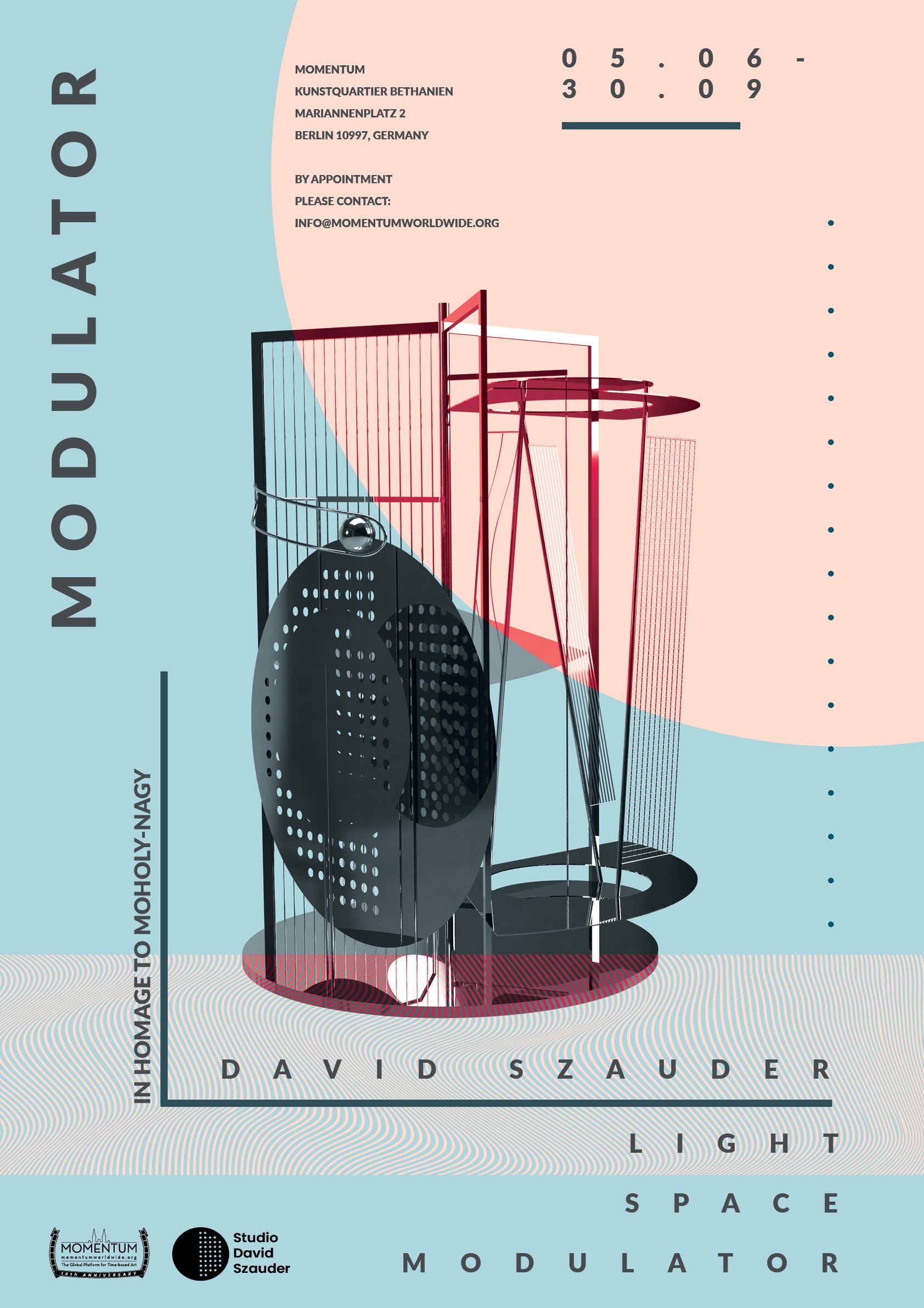
Taking as his inspiration the eponymous sculpture by one of the founding fathers of the Bauhaus, Moholy-Nagy, David Szauder has re-created his own large-scale 3.5m rendition of this iconic work as a kinetic light and sound sculpture for public space. First premiered in Korea, MOMENTUM brought Szauder’s Light Space Modulator to Berlin for the 100th anniversary of the Bauhaus in 2019. Initially installed at the historic Villa Erxleben, Light Space Modulator moved to the MOMENTUM gallery in March 2020 for a 6-month Studio Residency with David Szauder.
This exhibition of David Szauder’s work in progress comprises the process and results of his work over the course of his Studio Residency, in which he continued to develop his translation of Moholy-Nagy’s seminal ideas into a multi-mediated interactive installation; creating two videos and a soundscape algorithmically derived from the motion and sound of the sculpture – Light Space Materia and Kinetic Study no. 68.
Within the limits of the COVID-19 restrictions, this work-in-progress is punctuated with Open Studio presentations and Artist Talks throughout the course of David Szauder’s Studio Residency and Exhibition.
The original Moholy-Nagy work (151.1 × 69.9 × 69.9 cm), one of the earliest electrically powered kinetic sculptures, Light Prop for an Electric Stage (Light Space Modulator) holds a central place in the history of modern sculpture. Representing the culmination of Moholy-Nagy’s experimentation at the Bauhaus, it incorporates his interest in technology, new materials, and, above all, light. Moholy sought to revolutionize human perception and thereby enable society to better apprehend the modern technological world. He presented Light Prop at a 1930 exhibition of German design as a mechanism for generating “special lighting and motion effects” on a stage. The rotating construction produces a startling array of visual effects when its moving and reflective surfaces interact with the beam of light. The sculpture became the subject of numerous photographs as well as Moholy’s abstract film Lightplay: Black, White, Gray (1930). Over the years the artist and later the museums made alterations to the sculpture to keep it in working order. It is still operational today.
– [citation from Harvard Art Museums, holding the original Light Space Modulator in the Harvard Museum Collection]
The Original: Moholy-Nagy’s Light Space Modulator
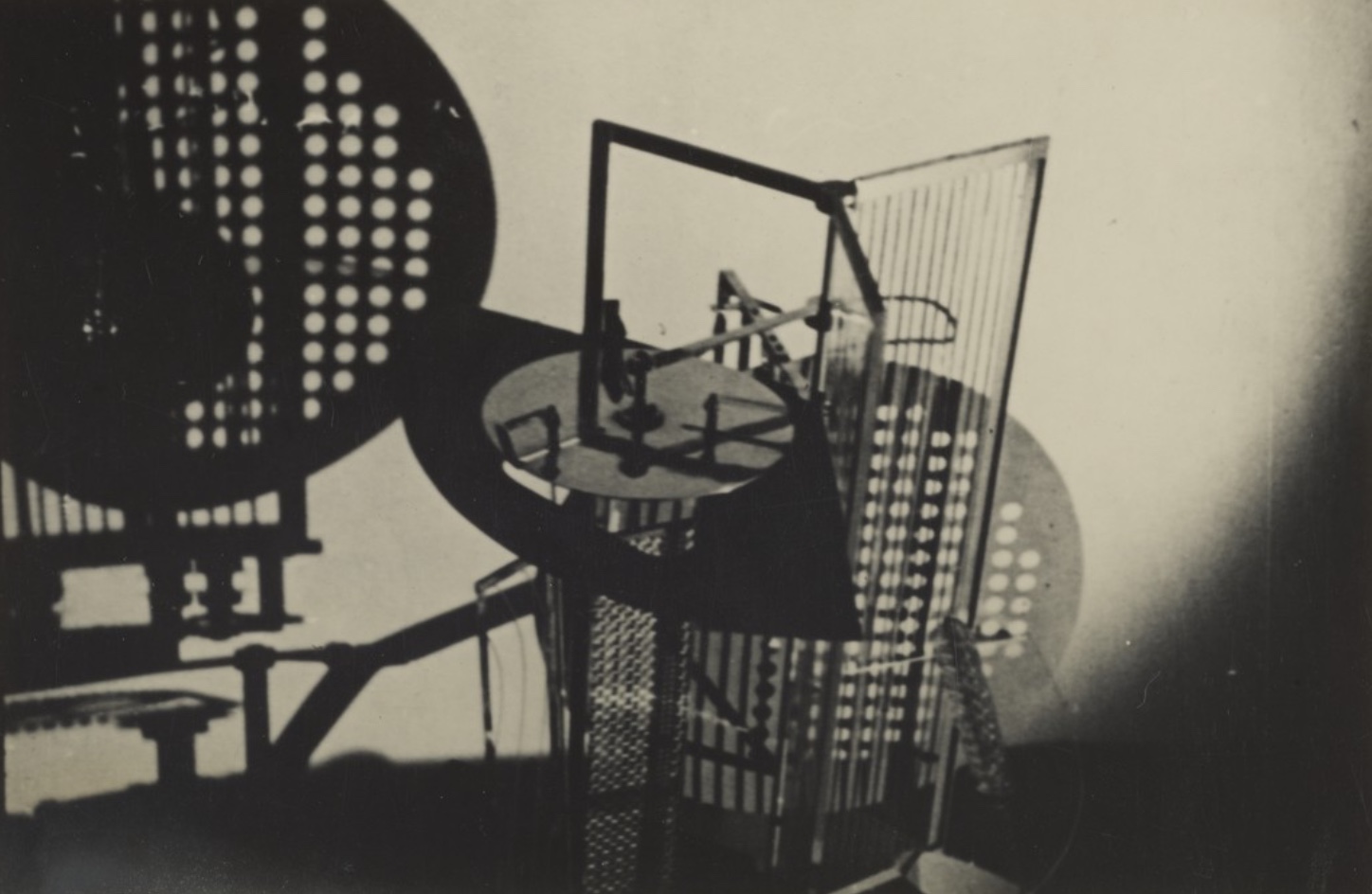
Light Space Modulator at MOMENTUM
ARTIST STATEMENT
One of the greatest Hungarian innovations, and one of the earliest electrically powered kinetic sculptures, Light Prop for an Electric Stage holds a central place in the history of modern sculpture.
Representing the culmination of Moholy-Nagy’s experimentation at the Bauhaus, it incorporates his interest in technology, new materials, and, above all, light. Moholy sought to revolutionize human perception and thereby enable society to better apprehend the modern technological world.
Light Prop for an Electric Stage, as Moholy-Nagy referred to it, not only pushes the temporal dimension of art but expands its spatial dimensions into the entire environment, including the viewer, who becomes a surface onto which light is reflected.
It embodies Moholy-Nagy’s goal of pushing art beyond static forms and introducing kinetic elements, in which the volume relationships are virtual ones, i.e., resulting mainly from the actual movement of the contours, rings, rods, and other objects.
To the three dimensions of volume, a fourth: movement – in other words, time – is added.
Moholy’s masterpiece is not just a piece of art, it is the perfect combination of science, art, and innovation.
To Moholy-Nagy’s original design, David Szauder adds a fifth dimension: the virtual.
Szauder’s vision for the Moholy Cloud expands the kinetic interactivity of the sculpture into the realm of connectivity in virtual space. Every moving part of the sculpture contains a sensor engaging with its environment, and through a wireless connection, all the acquired data is visualised to create a virtual Light Space Modulator.
[David Szauder]
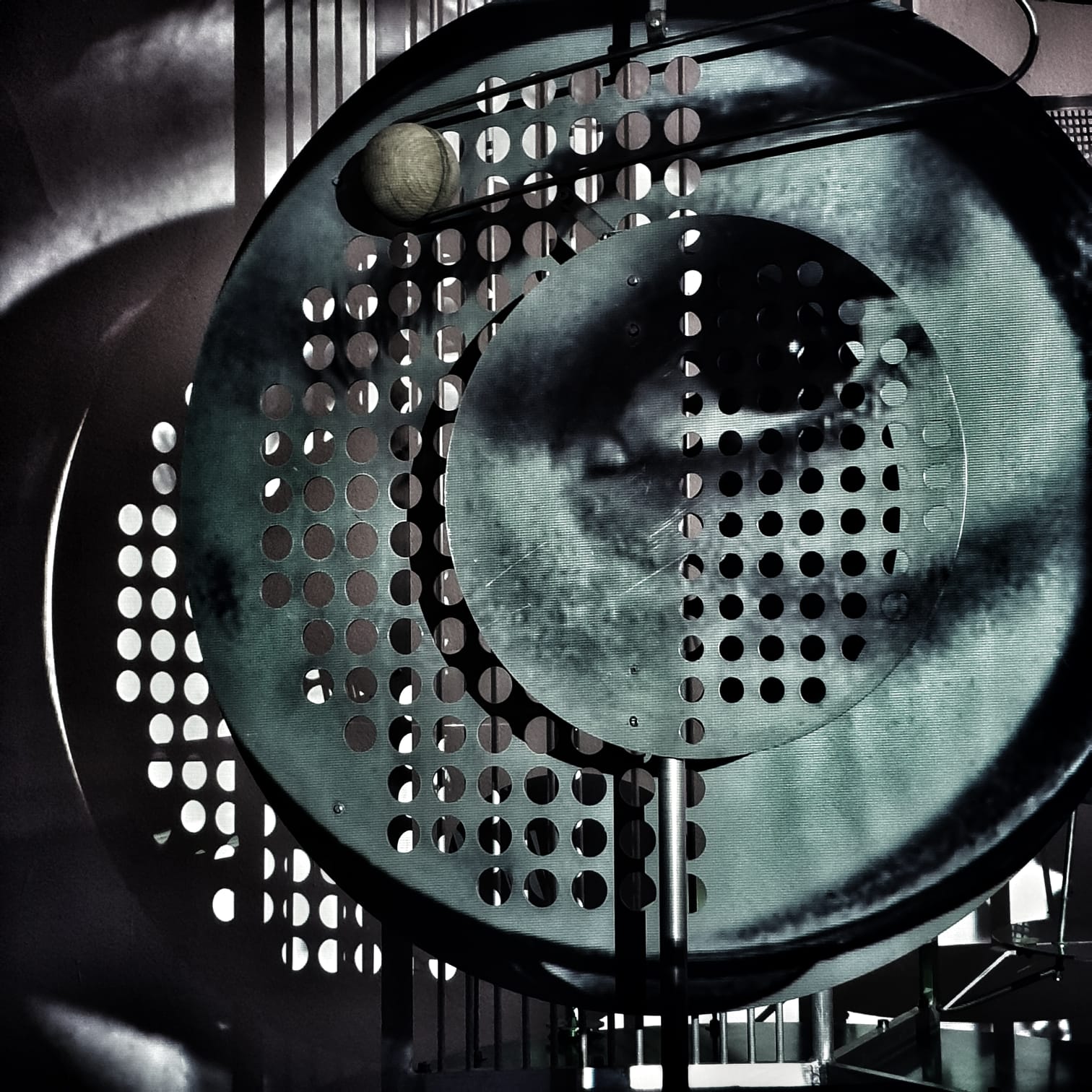
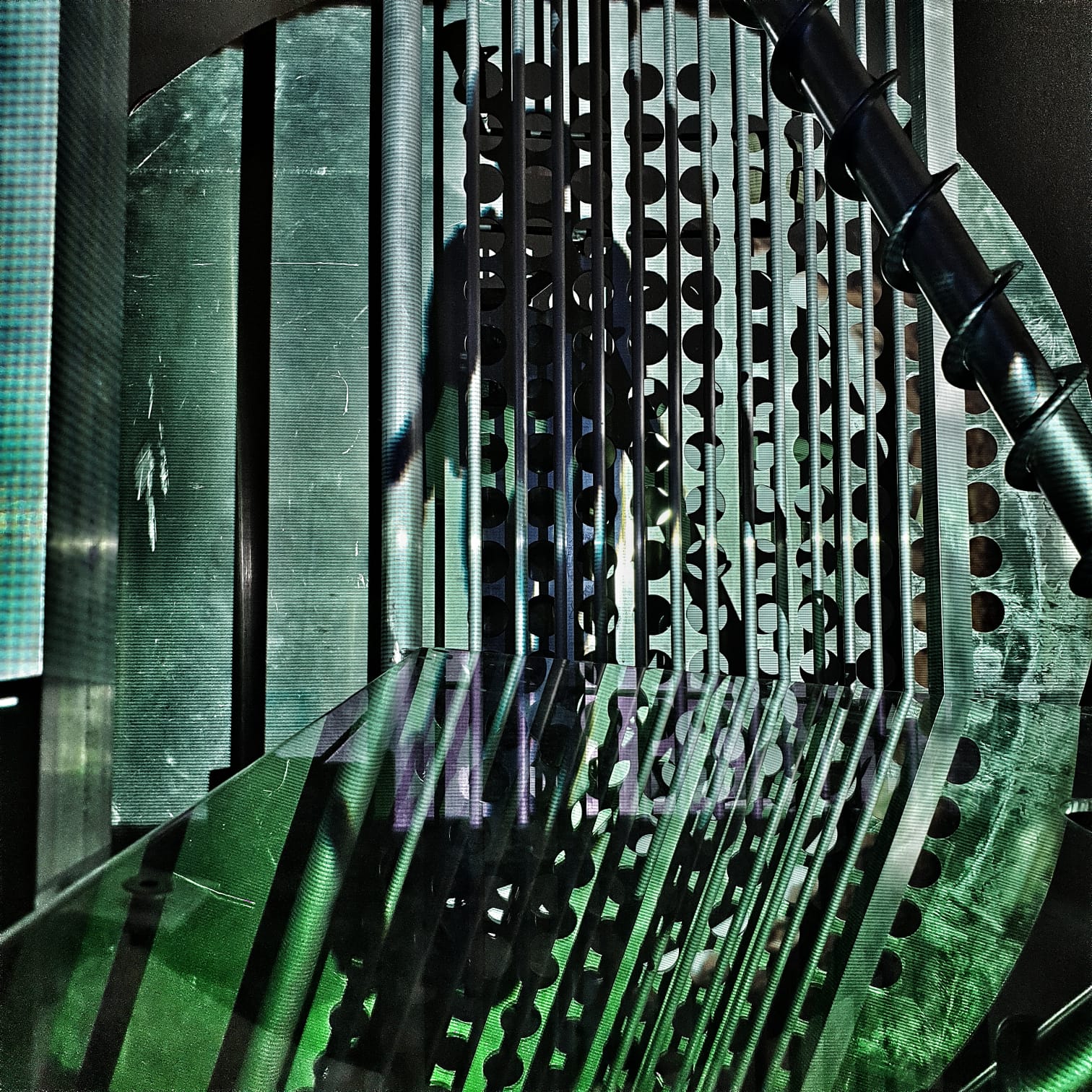
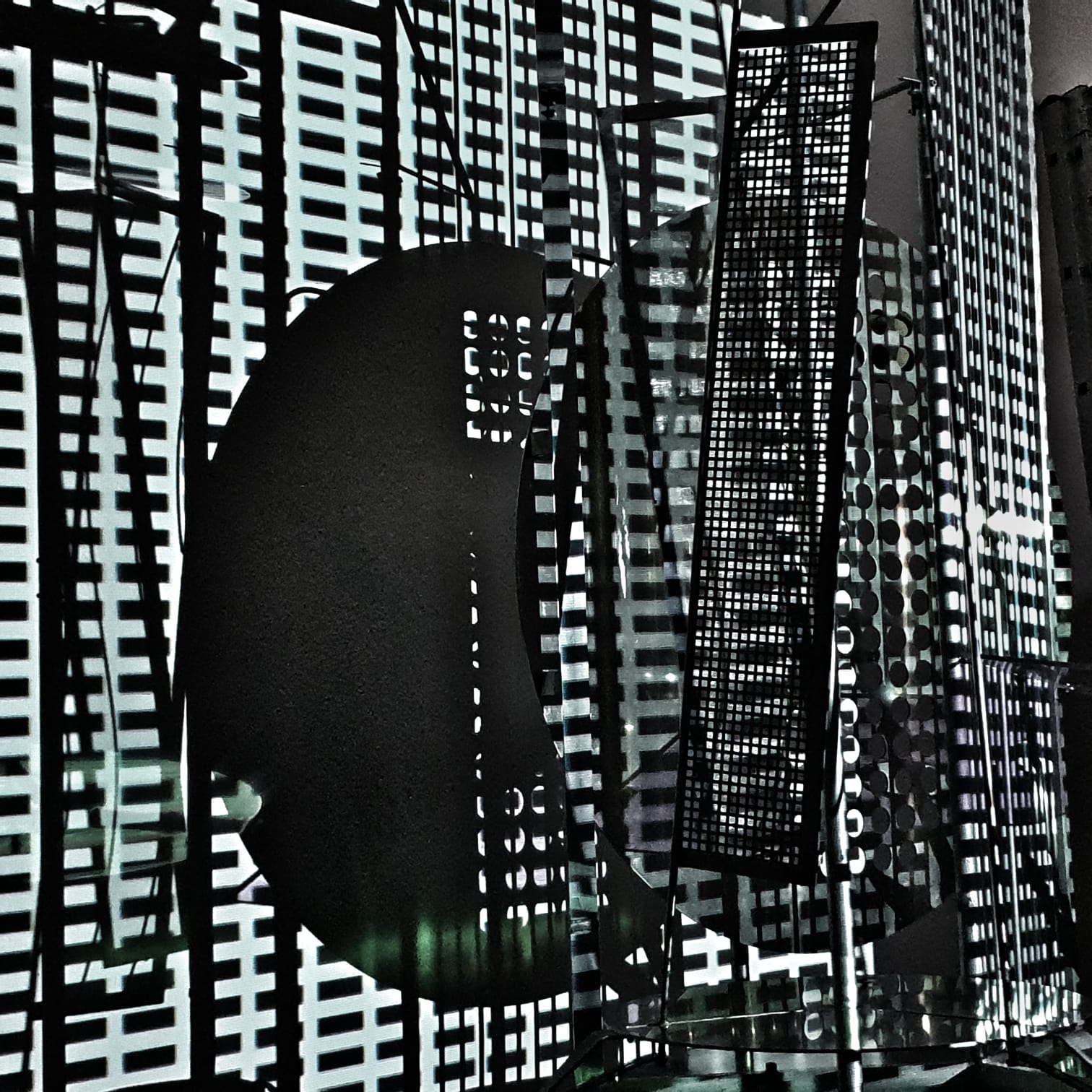
ARTIST BIO
Media artist David Szauder (b. 1976 in Hungary) studied Art History at the Eötvös Loránd University and Intermedia at the Hungarian University of Fine Arts in Budapest, and completed a Masters Fellowship at the School of Arts, Design and Architecture at the Aalto University in Helsinki. From 2009 to 2014 he worked as the curator at the Hungarian Cultural Institute in Berlin (.CHB). David Szauder is a visiting lecturer at the Film Academy, Potsdam, in addition to leading workshops on interactive media in Berlin and Budapest since 2010. Since 2019, he is the New Media Advisor for the Artistic Director of the VEB 2023 European Capital of Culture.
David Szauder has participated in a variety of international projects as artist and curator. In cooperation with MOMENTUM, previous projects include: “Art Nomads: Made in the Emirates” at Studio 1, Kunstquartier Bethanien (Berlin, 2016);“Ganz Grosses Kino” KIK Eight at Kino International (Berlin, 2016); MOMENTUM InsideOut: Amir Fattal, “Atara” (Berlin Gallery Weekend, 2015); MOMENTUM InsideOut: “A Time for Dreams” & “Budapest Sketch”(Berlin Art Week, 2014); “PANDAMONIUM Preview // INTERPIXEL: Media Art from Shanghai and Budapest” (Berlin Gallery Weekend, 2014); “INTERSECTION”: Film and Video Art Panel Discussion for Berlinale (Berlin Film Festival, 2014); “THRESHOLDS”: Performance, Exhibition, Discussion (.CHB, Berlin Art Week, 2013); “THRESHOLDS” (TRAFO Center for Contemporary Art, Stettin, Poland, 2013-2014); MOMENTUM InsideOut: “Mass & Mess” (TRAFO Center for Contemporary Art, Stettin, Poland, 2013).
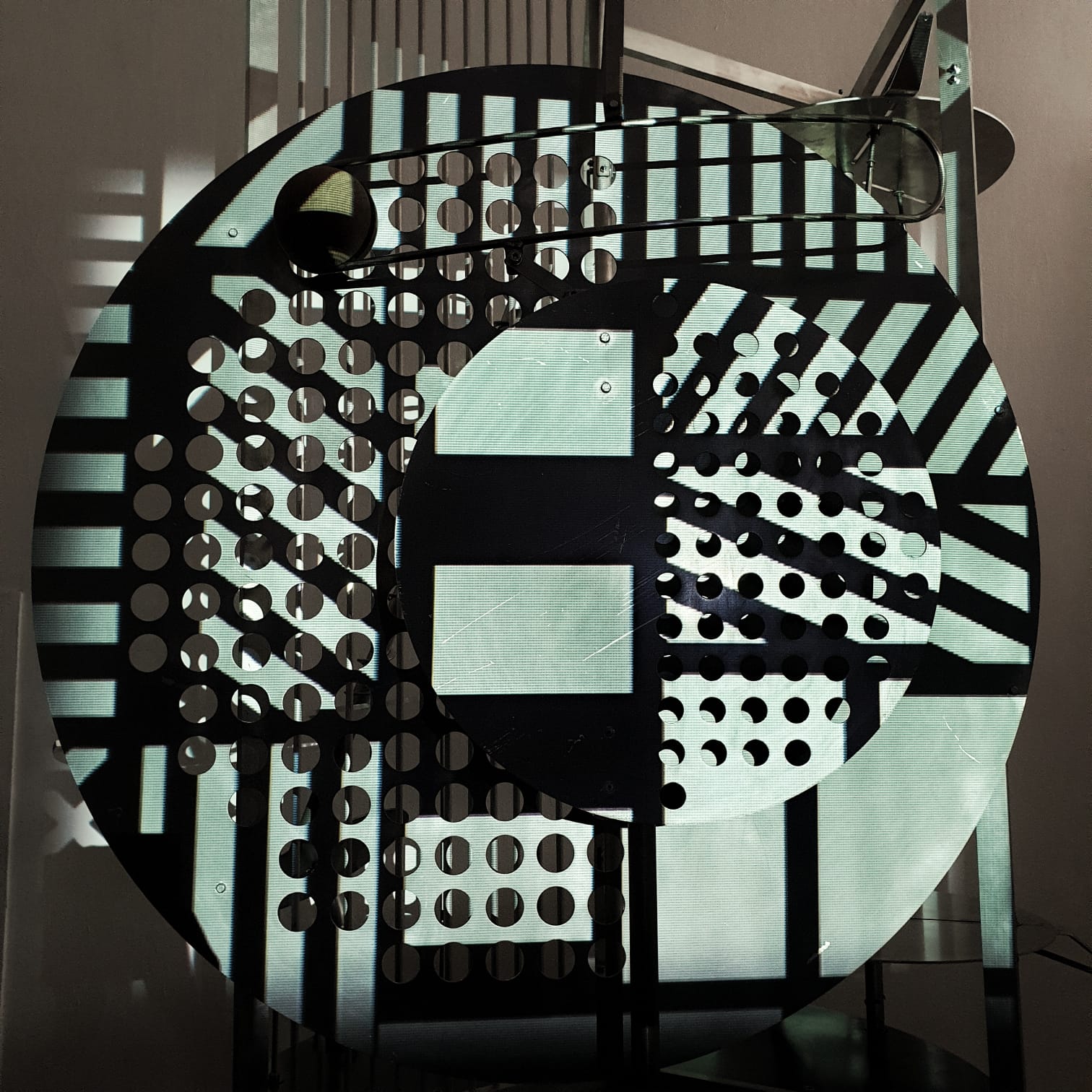
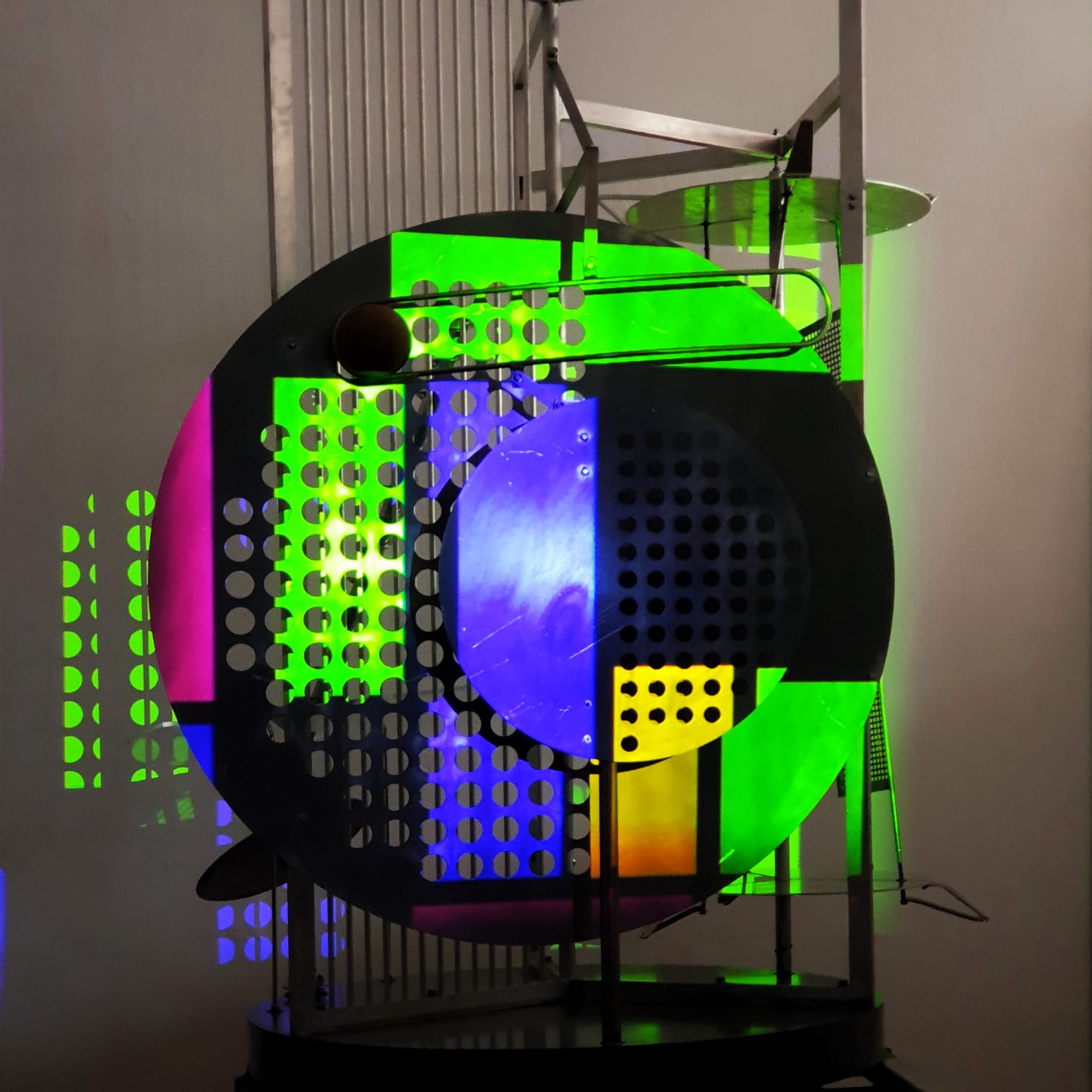
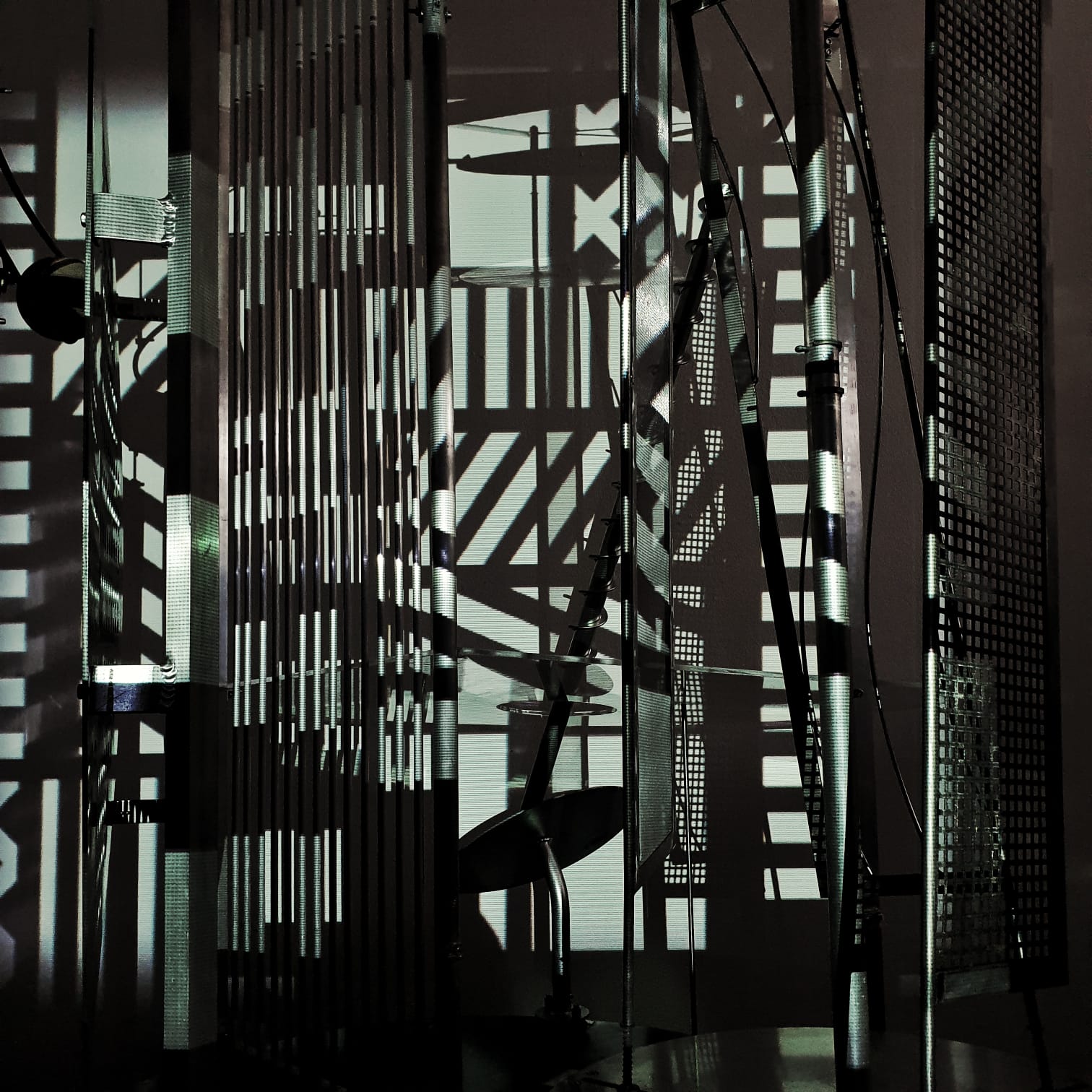
WORKS SHOWN TOGETHER WITH LIGHT SPACE MODULATOR
LIGHT SPACE MATERIA
2020, Video, 8 min 27 sec
Created by David Szauder for the exhibition Light Space Modulator at MOMENTUM, and subsequently acquired by the MOMENTUM Collection
Translating Moholy-Nagy’s seminal ideas for the Bauhaus into a digital context, David Szauder’s large-scale kinetic light and sound sculpture Light Space Modulator (2020) serves as the basis for his film Light Space Materia in addition to a series of over 100 videos, digital animations, and soundscapes algorithmically derived from the motion and sound of his sculpture. David Szauder’s analysis of the Bauhaus-related kinetics of the original piece focuses on the fundamental question of how modern technology could change the formal expression of movement. The Bauhaus always held an important pioneering position in the relationship of art to technology. For this reason, this characteristic always formed an essential basic notion of Szauder’s work and led him to choose computer code when creating the animations. The code contributed to a better understanding of the compositional methods and movements and opened a new door for the perception of the 3-dimensional kinetic world. As the last step, a soundscape was derived from the ambient sound and kinetic movement of Szauder’s Light Space Modulator sculpture using algorithms based on motion analysis. This soundscape accompanies Szauder’s film Light Space Materia, which commingles found footage related to the seminal ideas of the Bauhaus with digital 3D animations made by the artist to foreground the haptic qualities of materiality of the image.
KINETIC STUDY no. 68
2020, Video Animation, 4 min 2 sec
Created by David Szauder for the exhibition Light Space Modulator at MOMENTUM, and subsequently acquired by the MOMENTUM Collection
Kinetic Study no. 68 is based on the structure of David Szauder’s Light Space Modulator sculpture. Using algorithms to translate the motion and sound of the sculpture into a 2-dimensional video animation, Szauder breaks down this work into four stages: The Skeleton (Line Art), Colours, Textures, and Collage.
Drawing on techniques developed in his ongoing series of Video Sketches, Szauder hand draws animated collages incorporating family photos and found footage. In the artist’s words, “They are kinds of kinetic systems, structures, moving like the ‘perpetuum mobile’. In my case, the perpetuum mobile is the metaphor of the continually changing inner world of mine. There are a good number of nodes which are connected like impossible machines, and the movements of these nodes create an impossible hierarchy or dominations between the elements of the structure. Occasionally the system strives for completion, but these operations are just alibis, the real aim is to keep the movement endless, the structure closed and the hierarchy sustainable. Easy. Like these sketches.”
PARALLEL SCREENING:
Moholy-Nagy’s Dynamik der Großstadt (2006)
Filmic experiment after Lászlò Moholy-Nagy
35 mm, 16 mm / Super 8 mm / DV-PAL and VHS, 3-channel video, 13:48 min. loop
Project team: Nike Arnold, Prof. Dr. Andreas Haus, Aline Helmcke, Frank Hoppe, Frédéric Krauke, Walter Lenertz
Production: UDK-Berlin
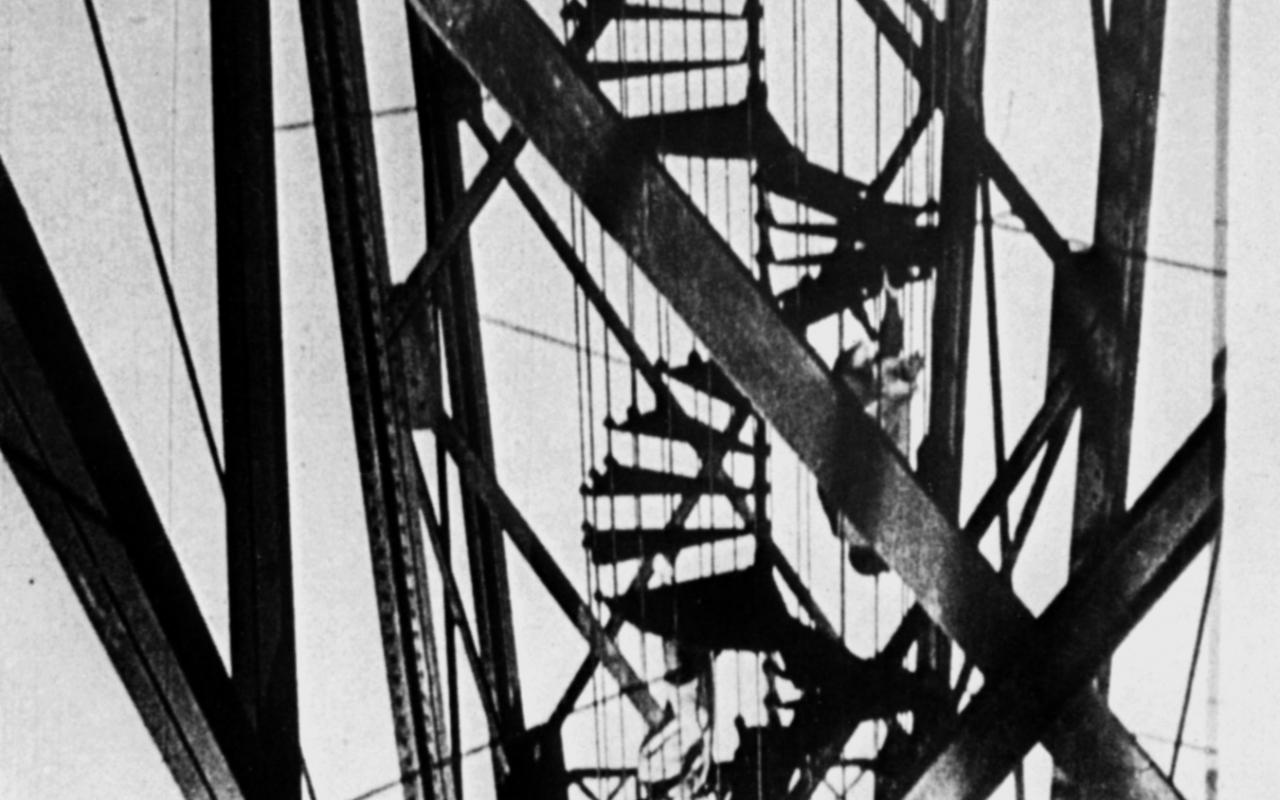
In his avant-garde film “Dynamics of the Big City” László Moholy-Nagy portrays the endless flow of big-city life. It is one of the first attempts in the history of film to visually capture the manifold moments of movement in a modern metropolis. The foto film “Dynamics of the Big City” (1921/1922) became part of a new genre that emerged in the 1920s in several places at once: the Big City Symphony (even though Moholy-Nagy’s film could only be realized posthumously). The working group of the Faculty of Fine Arts of the UDK Berlin implemented the sketch as a 3-screen projection in their interpretation of “Dynamics of the Big City – A Filmic Experiment after László Moholy-Nagy”.
Installation at Gallery Kleiner von Wiese, Villa Erxleben, Berlin, December 2019 – January 2020

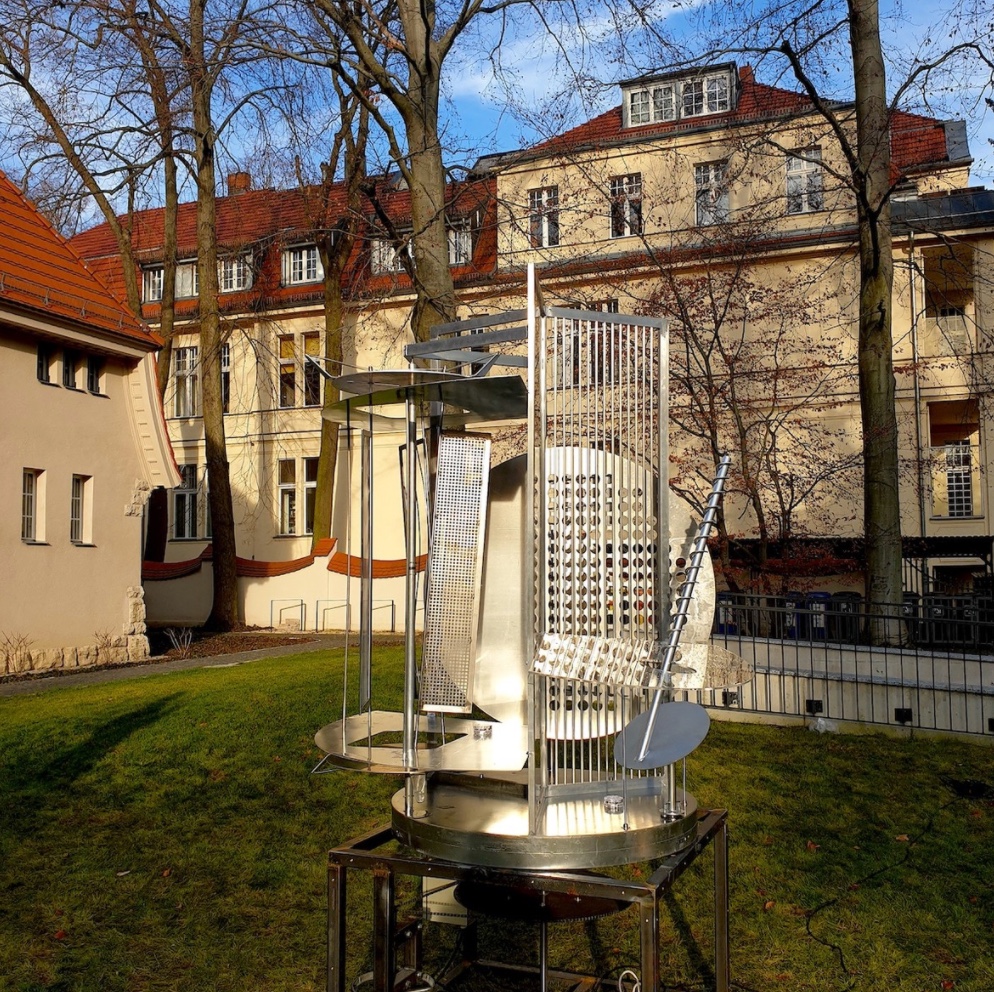

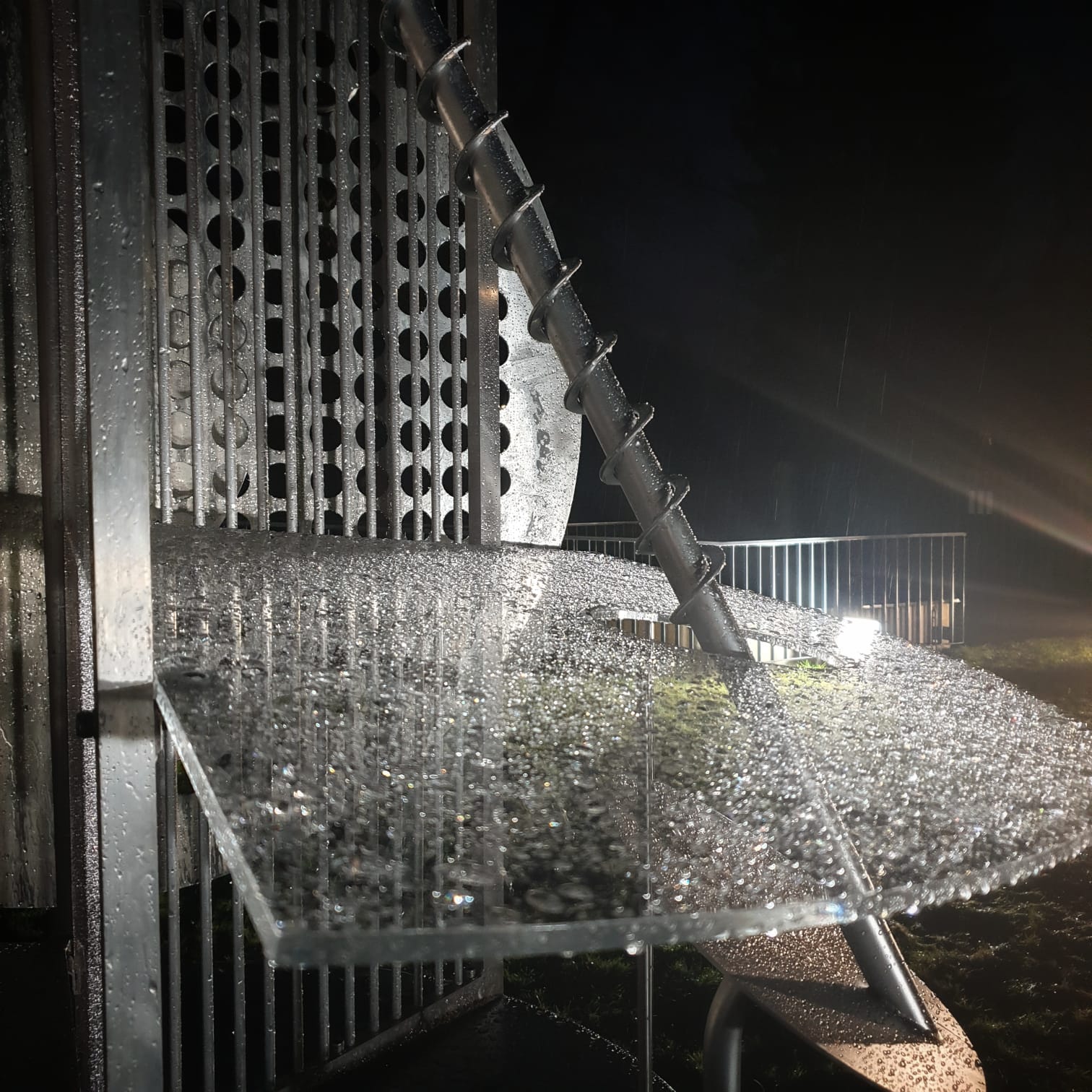

With thanks to:


 Back to Homepage
Back to Homepage

